If other treatment methods have been unsuccessful, depending on your diagnosis, surgery may be an option to address your hip pain and mobility. There are various surgical options available, all intended to help restore your ability to move, alleviate your pain, and improve your quality of life. Talk to your surgeon about what may be right for you.
Total hip replacement surgery
During total hip replacement surgery, the bone surfaces and cartilage that have been damaged are removed and replaced with implants. A standard total hip replacement has four parts: a cup, liner, ball, and stem. The cup is made of metal and fits into the natural hip socket. A liner, made of a medical grade plastic called polyethylene, fits inside the cup. The top of the thighbone is replaced with a metal, or ceramic, ball that is then attached to a metal stem that fits down into the thighbone.
These implants are designed to mimic the action of your natural hip joint, helping to restore movement and reduce painful bone-on-bone contact.
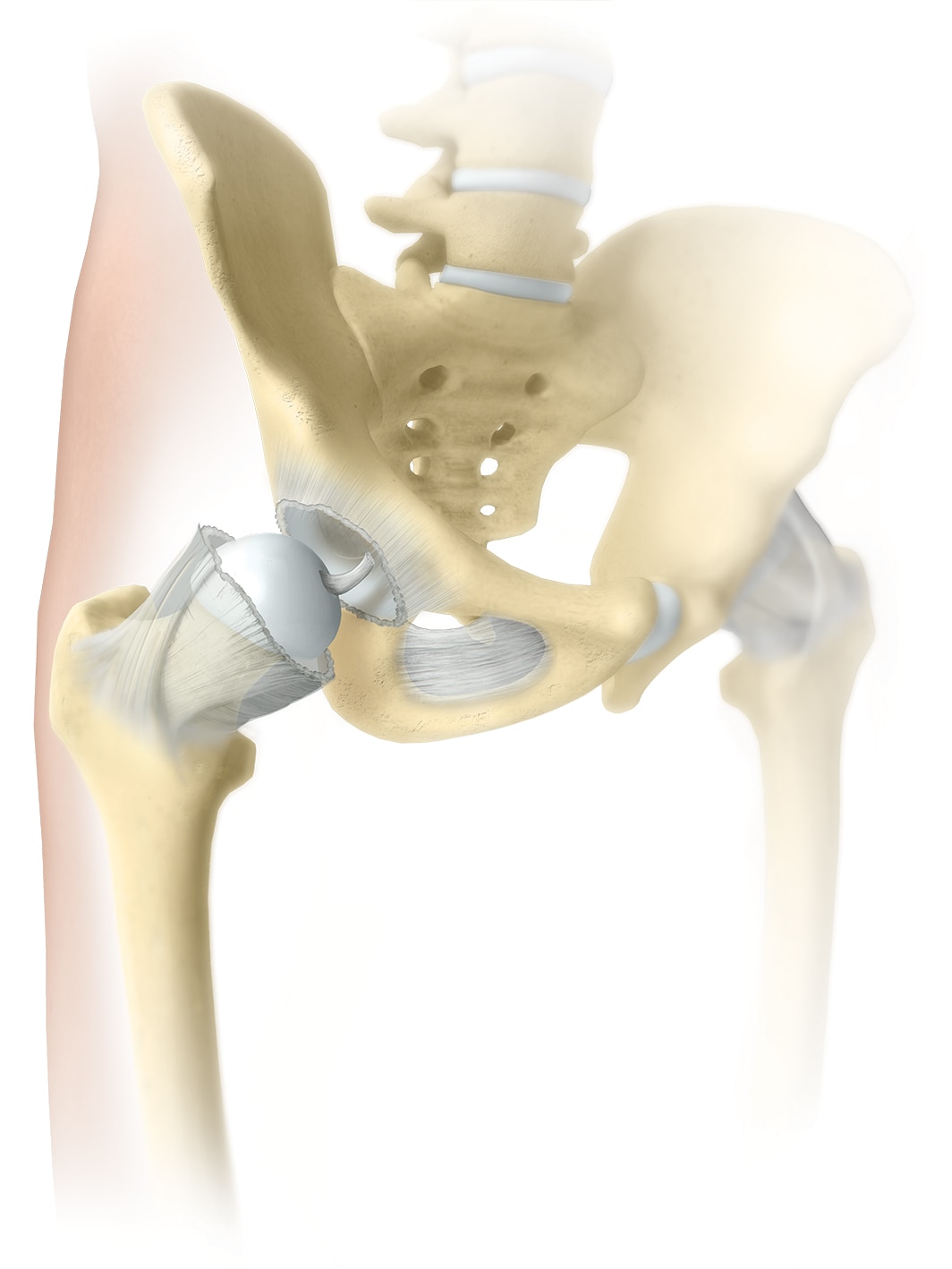 Healthy Hip
Healthy Hip
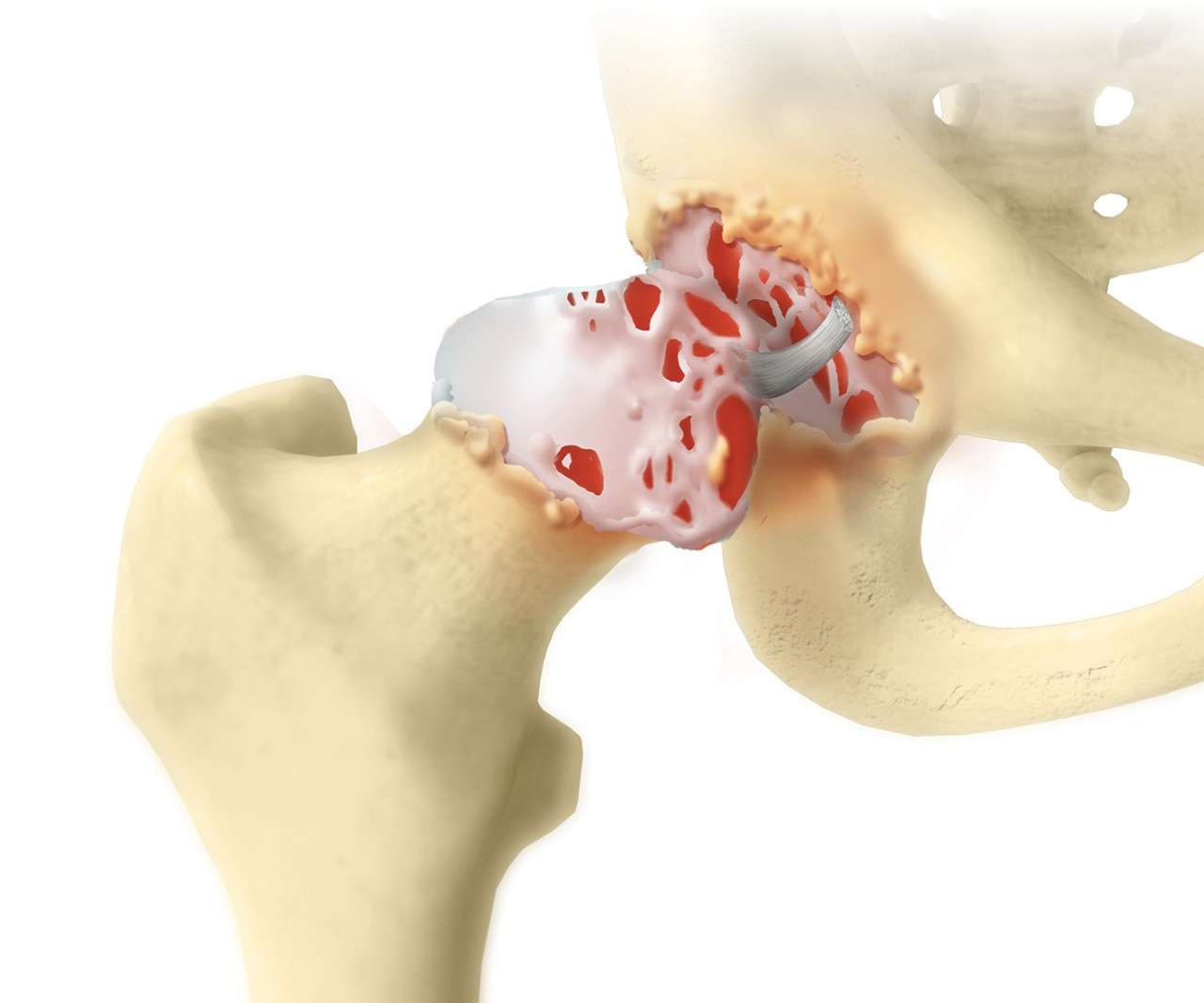 Arthritic Hip
Arthritic Hip
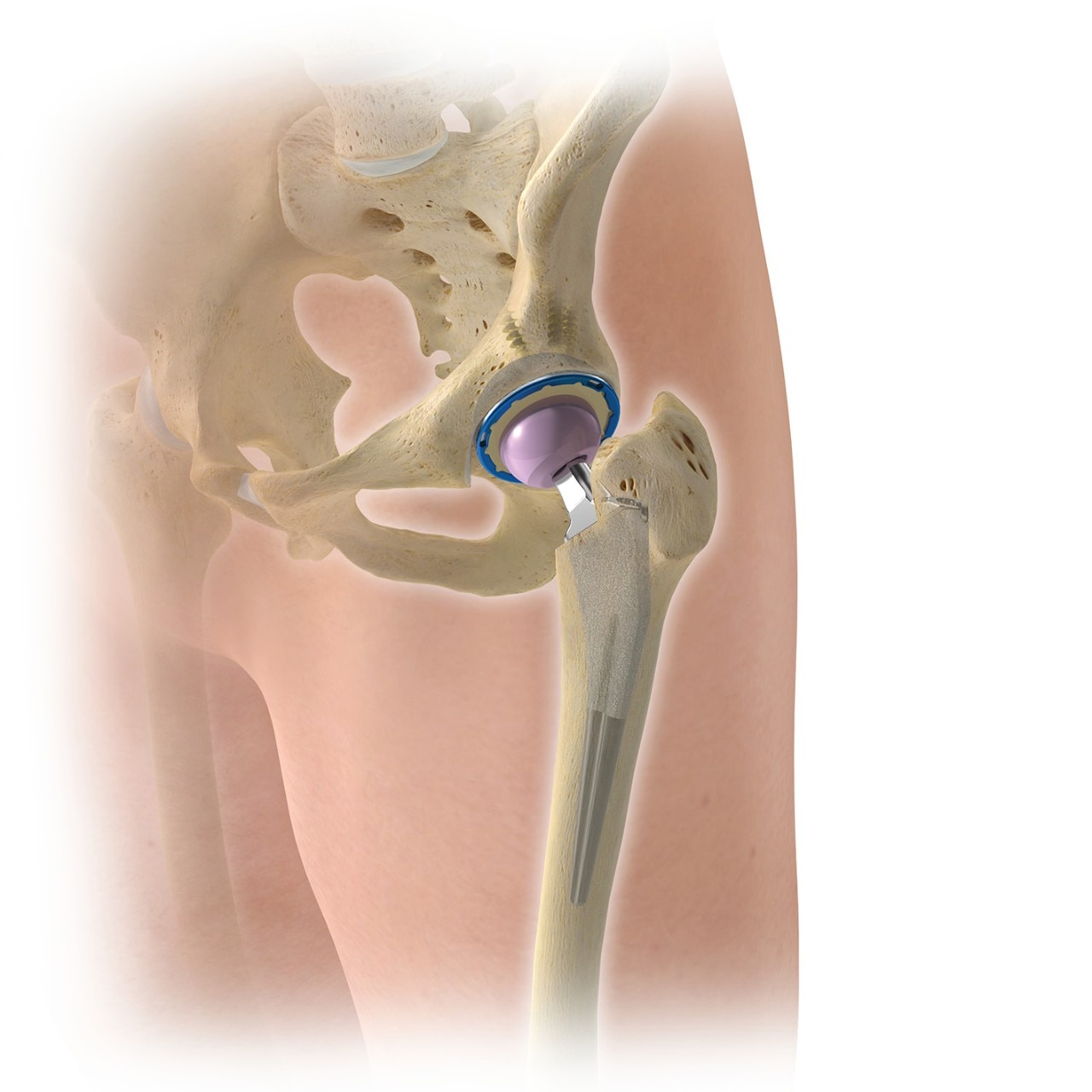 Total Hip Replacement
Total Hip Replacement
Understanding treatments for hip pain
To learn more about hip pain treatment options, click here.
Anterior hip surgery
Anterior hip surgery uses the same implants as total hip replacement surgery, but requires less cutting of the tissues around the hip. During traditional hip replacement surgery, an eight to 12 inch incision is made in the side or back of your leg. With anterior hip surgery, your doctor will make a three to six inch incision. This procedure also allows your surgeon to preserve the tissue that keeps your joint tight, which might help minimize the risk of dislocation after surgery.
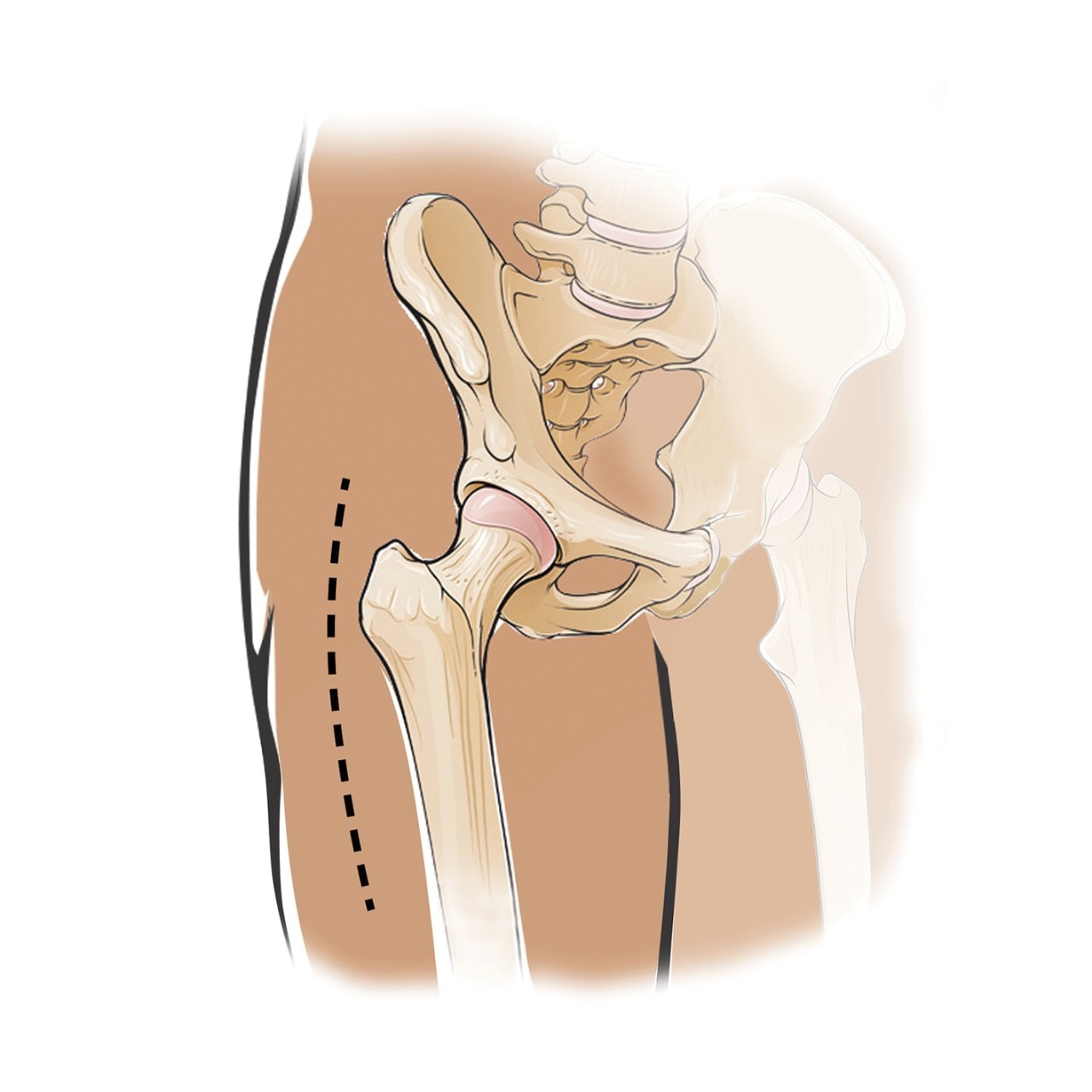 Traditional surgery
Traditional surgery
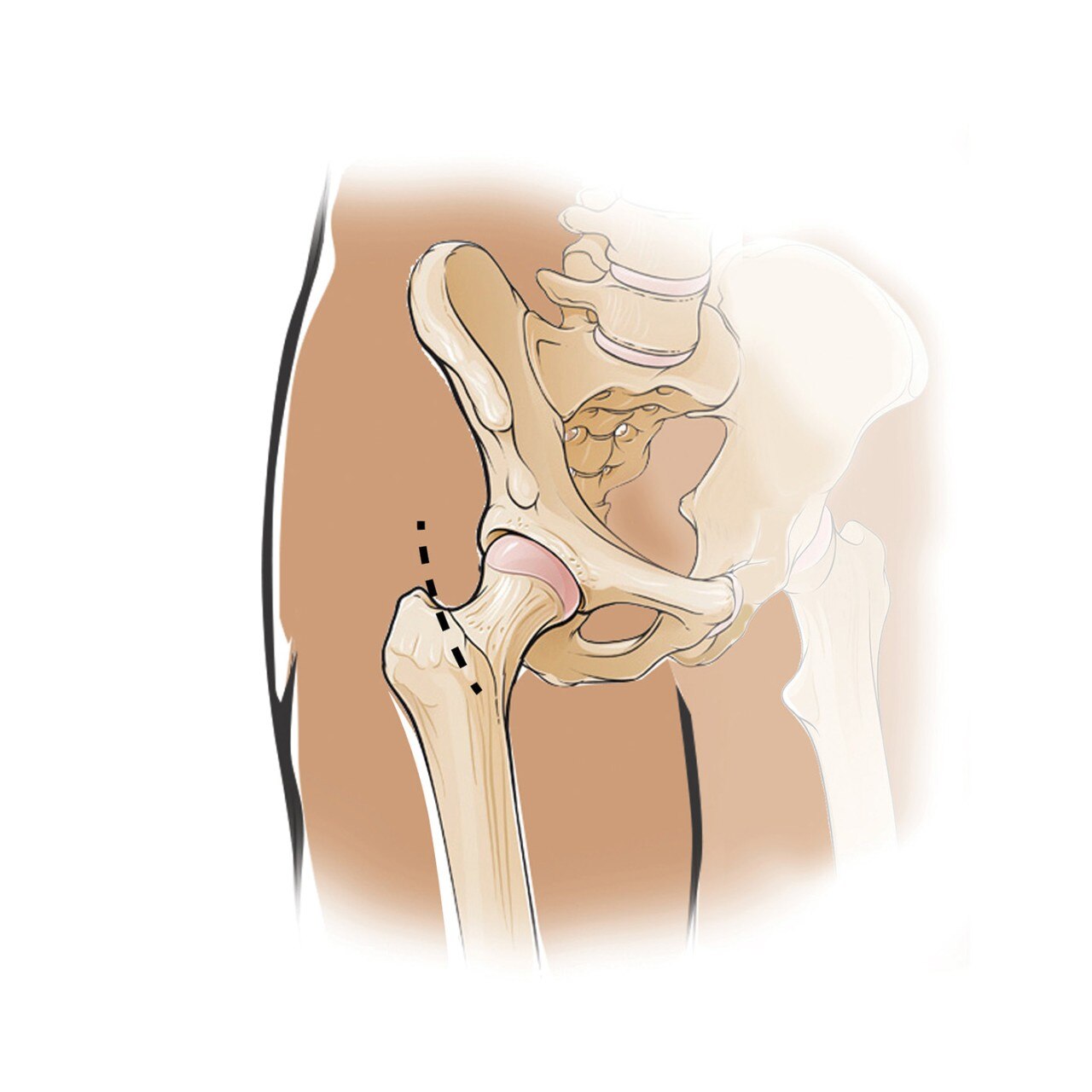 Anterior hip surgery
Anterior hip surgery
Hip resurfacing surgery
Another type of hip replacement procedure is called hip resurfacing. In traditional total hip replacement, the top of the thighbone and the damaged socket are both removed. They are then replaced with metal, plastic, and/or ceramic components. With hip resurfacing, the top of the thighbone isn’t removed. It’s trimmed and capped with a smooth metal covering. The damaged bone and cartilage in the socket are removed and replaced with a metal shell, typically lined with a plastic-like insert.
The prospect of having any of the treatments listed above can be a lot to handle. Be open with your doctor and your family about how you are feeling. As with many procedures, there are risks associated with joint replacement as you can see below. Together, you and your surgeon can discuss these risks and figure out a treatment path that feels right for you.
Risks of joint replacement
Some of the risks associated with joint replacement include infection, wear, implant or bone fracture, loosening, nerve damage and implant migration (movement); some patients continue to experience some pain after joint replacement. Individual results of joint surgery will vary. Your results will depend on your personal circumstances. How long a hip replacement will last varies from patient to patient. It depends on many factors, such as the patient's physical condition, activity level, and body weight and how well you follow doctor’s orders. Replacement joints are not as strong or durable as natural, healthy joints, and there is no guarantee that a prosthetic joint will last the rest of a patient's life. All hip replacements may need to be replaced at some point. Talk to your surgeon about these and other risks associated with joint replacement.
To learn more about the risks of hip replacement surgery, click here.




